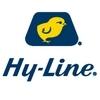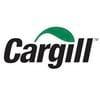Effective Enrichments for Broiler Breeders




Brandes, A.G., Giersberg, M.F., Kemper, N., & Spindler, B. (2020). Provision of perches and their use by broiler breeders on the basis of a case study. European Poultry Science, 84, 1–13.
Brake, J. (1987). Influence of presence of perches during rearing on incidence of floor laying in broiler breeders. Poultry Science, 66, 1587–1589.
Brake, J., Keeley, T.P., & Jones, R.B. (1994). Effect of age and presence of perches during rearing on tonic immobility fear reactions of broiler breeder pullets. Poultry Science, 73, 1470–1474.
Estevez, I. (2009). Behavior and environmental enrichment in broiler breeders. In Hocking, P. (Ed.), Biology of Breeding Poultry (pp. 261–283). Bodmin, UK: CAB International.
Gebhardt-Henrich, S., Toscano, M., & Würbel, H. (2017). Perch use by broiler breeders and its implication on health and production. Poultry Science, 96, 3539–3549.
Gebhardt-Henrich, S., Toscano, M., & Würbel, H. (2018). Use of areal perches and perches on aviary tiers by broiler breeders. Applied Animal Behaviour Science, 203, 24–33.
Hocking, P., Jones, E., & Picard, M. (2005). Assessing the welfare consequences of providing litter for feed-restricted broiler breeders. British Poultry Science, 46, 545–552.
De Jong, I., Fillerup, M., & Blokhuis, H. (2005). Effect of scattered feeding and feeding twice a day during rearing on indicators of hunger and frustration in broiler breeders. Applied Animal Behaviour Science, 92, 61–76.
De Jong, I., & Van Emous, R. (2017). Broiler breeding flocks: management and animal welfare. In: [Book or proceeding title], pp. 211–230.
King, L. (2001). Environmental enrichment and aggression in commercial broiler breeder production? In: Garner, J.P., Mench, J.A., & Heekin, S.P. (Eds.), Proceedings of the 35th Congress of the International Society for Applied Ethology, August 4–9, Davis, California, USA, p. 174.
Leone, E., & Estevez, I. (2008). Economic and welfare benefits of environmental enrichment for broiler breeders. Poultry Science, 87, 14–21. https://doi.org/10.3382/ps.2007-00154
Van Middelkoop, J., Van der Haar, J., Robinson, F., Luzi, C., & Zuidhof, M. (2000). The application of scatter feeding in managing feed restriction during the rearing of broiler breeders. Proceedings of the 21st World’s Poultry Congress, Montréal.
Vasdal, S., Gebhardt-Henrich, S., Tahamtani, F., & Kittelsen, K. (2022a). Effect of perch access on perching, health, and production outcomes in commercial broiler breeder flocks. Poultry Science, 101(11), 102160.
Vasdal, S., Gebhardt-Henrich, S., Kittelsen, K., & Tahamtani, F. (2022b). Commercial broiler breeder pullet hens use perches but show no preference for perch type or height. Applied Animal Behaviour Science, 249, Article 105608.

















